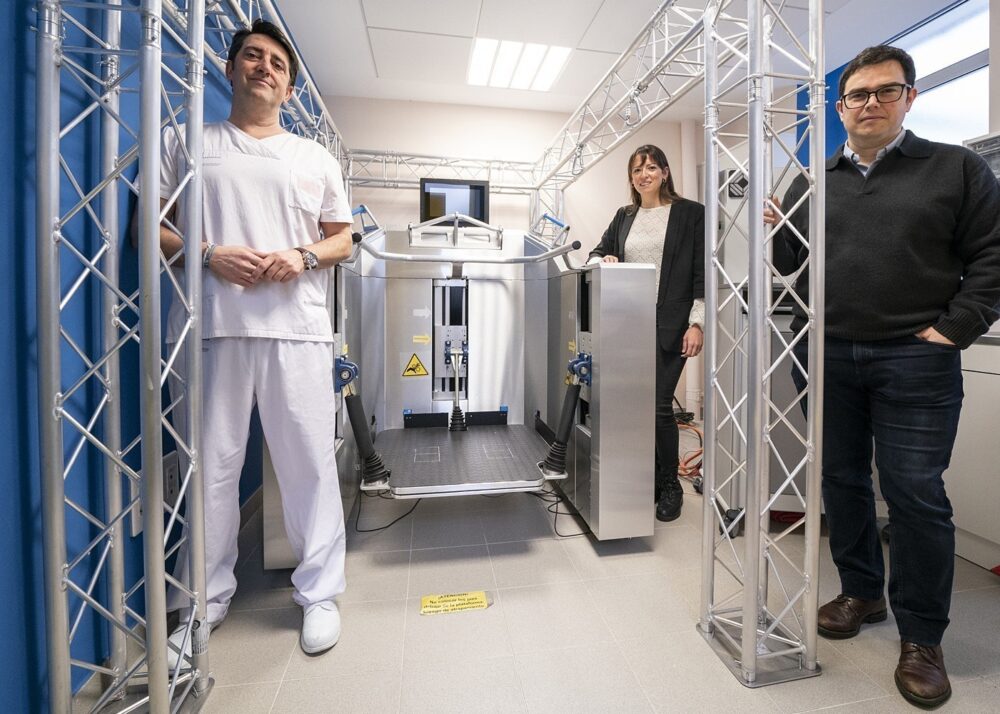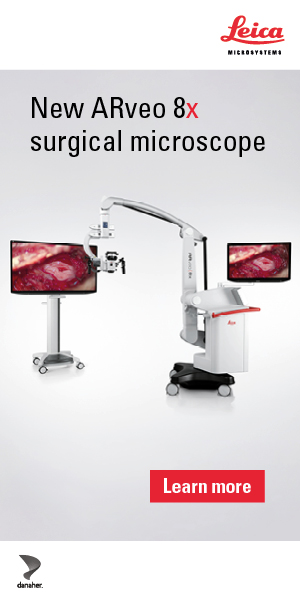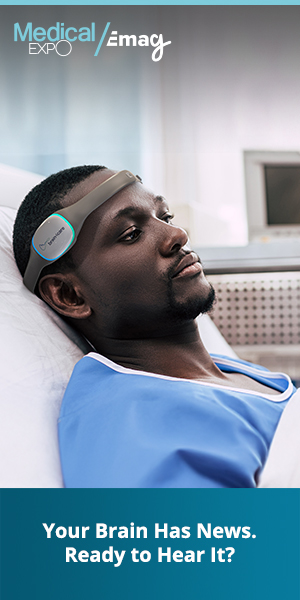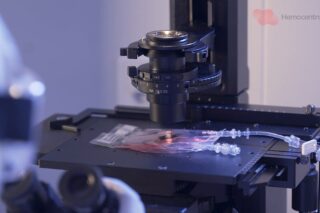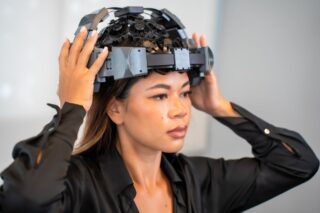Researchers at the University of the Basque Country and Gorliz Hospital have developed and are testing a precision device to objectively assess and improve post-stroke balance recovery.
Every 40 seconds, someone in the United States has a stroke, according to the Centers for Disease Control and Prevention (CDC). Globally, 12.2 million strokes happen every year, with 6.5 million people dying as a consequence. And, when it comes to the survivors, more than half of patients aged 65 and older face reduced mobility. The World Stroke Organization estimates that 110 million people worldwide are currently living with the stroke aftermath.
This scenario makes it particularly important that a group of researchers at the University of the Basque Country (UPV/EHU) has developed and patented a promising mechatronic instrument that reliably and repeatedly conducts measurements for treating the aftereffects of stroke, vertigo, or any other condition affecting people’s balance. They have been working in close collaboration with professionals from different departments of Gorliz Hospital, located in Gorliz, in the Basque province of Vizcaya, Spain.
Balance: Measuring the Center of Pressure
Partial loss of strength or partial paralysis are two of the most common sequelae of stroke. That means stroke patients must undergo long rehabilitation processes to recover their balance and gait. However, traditional techniques used in exercise-based assessments are not entirely objective, as they largely depend on the person carrying them out. That is why professionals from Gorliz Hospital suggested a need to objectify this assessment and systematize the evolution of patients during the rehabilitation process.
So, the UPV/EHU’s COMPMECH Research Group, which has expertise in mechatronics (a multidisciplinary branch of engineering that develops devices and technologies combining systems, electronics, mechanics, control, and robotics), developed a new prototype to assess, exercise, and rehabilitate a person’s balance when standing on a surface by measuring his or her center of pressure. The prototype’s name is Balance HG Oreka (HG comes from Hospital Gorliz, and Oreka means “balance” in Basque).
For example, when a person is standing inside a moving bus, their body must maintain balance whenever the vehicle accelerates or brakes. The way the body balances itself in this kind of situation is by distributing its weight forwards and backwards supported by the soles of the feet against the floor. The resultant point of this force is known as the center of pressure, and the study of its movement enables a person’s balance to be accurately assessed.
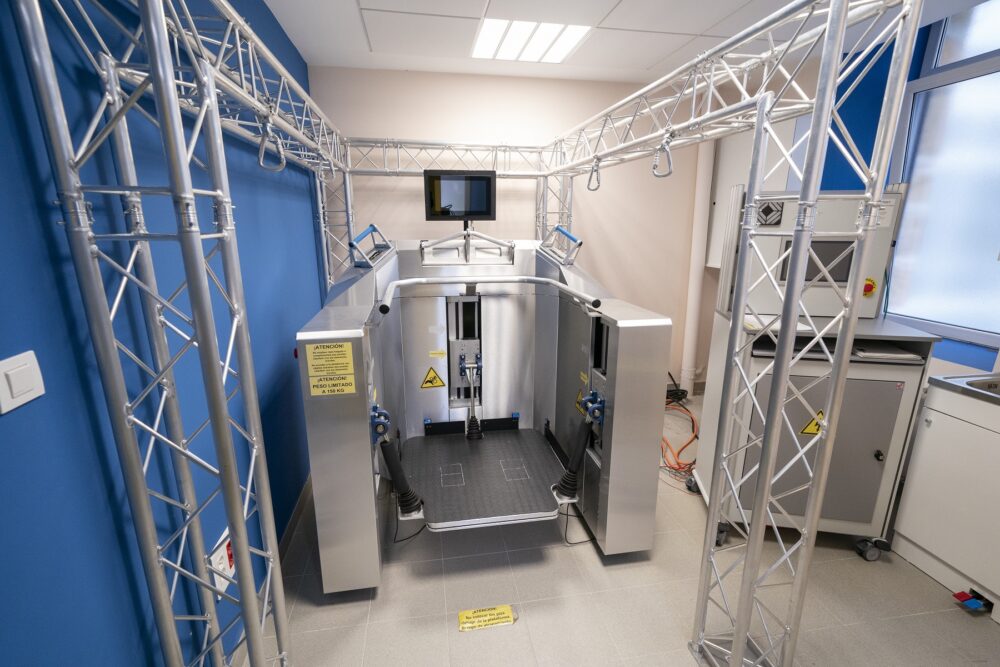
How the Oreka Works
The prototype developed by the COMPMECH group simulates—and even looks a bit like—precisely that type of situation: the interior of a bus in movement. The platform on which the patient with balance problems stands has two functions. The first is to stimulate the patient’s balance or, in other words, to provoke a reaction to see how he or she responds. The mechanism raises the platform vertically or tilts it forward, from side to side or in any direction, with a certain amplitude and speed that is determined by the physiotherapist who is programming the machine. The second function, on the other hand, is to measure the patient’s response. The platform rests on four sensors that enable the accurate measurement of the force the patient is exerting on the platform, and this force determines the movement of the center of pressure.
The device’s capacity to make reliable and repeatable measurements means that it is possible to introduce the same stimulus of a certain amplitude and speed so that the patient’s response (and therefore, evolution) can be better monitored over time.
“Our main challenge is that the movement that generates the disturbance must be precise and repeatable, but also that the force plate measurement is accurate to the point of reflecting the patient’s response only. In that sense, one of the biggest difficulties is to ensure that the forces measured by the force plate are not affected by its motion so that the reading captures exclusively the patient’s response. It is these forces that allow us to measure the position of the patient’s center of pressure, which provides us with valuable information about the patient’s state of equilibrium,” Prof. Fran Campa, from the COMPMECH group, explained to MedicalExpo e-magazine.
The Tests and the Future
The prototype is already being tested by patients and volunteers. Campa is thrilled by the level of collaboration they have had with the team of professionals at Gorliz Hospital:
“Their involvement has been invaluable. They have opened the doors of the hospital to us, and we have worked side by side with professionals from many different fields. We are currently in the first phase of the clinical trial, assessing the device’s safety and usability. To achieve this, 20 healthy people and 10 stroke patients have undergone one session, and we are collecting feedback from them and from the staff who operate the machine. We can anticipate that the machine is capable of perceiving notable differences in the response of healthy people and stroke patients. Furthermore, it is proving to be reliable and safe,” says Prof. Campa.
Although stroke patients are the main target, it is worth pointing out that there are many other health conditions where patients face balance problems—such as vertigo or people who have suffered amputations and are getting used to a prosthesis.
